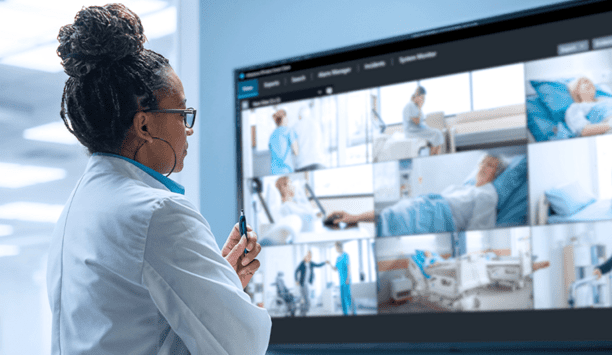Security is of the utmost importance in the healthcare setting so that patients and staff alike can focus their attention on improved clinical outcomes. Unfortunately, visitors are often a contributing factor to safety incidents and the burden on hospital staff has increased exponentially since the onset of the pandemic.
Let’s review the current state of healthcare workplace safety and how an automated, cyber-physical approach can help eliminate the administrative hassle and strengthen safety protocols.
Global pandemic adds undue strain
The ongoing global pandemic has placed enormous strain on healthcare systems and people are only beginning to understand the impact in terms of both patient outcomes and healthcare worker wellbeing. A recent analysis by Press Ganey revealed an increase in patient safety events of all types during 2020.
In late 2021, the Johns Hopkins Centre for Health Security released a new report sharing survey results from 1,189 healthcare workers in which 47 percent reported feelings of burnout.
Workplace violence in healthcare
Incidents of serious workplace violence are four times more common in healthcare than in private industry
Even before the current stressors placed on healthcare systems by the pandemic, hospitals were a relatively dangerous place to work. While a high level of danger is expected from industries like construction or manufacturing, healthcare presents a more high-risk environment than both.
According to the Occupational Safety and Health Administration, incidents of serious workplace violence are four times more common in healthcare than in private industry. And in 2019, U.S. hospitals recorded 221,400 work-related injuries and illnesses, which amounts to 5.5 work-related injuries and illnesses for every 100 full-time employees.
Visitors play a role
According to the Bureau of Labor Statistics, violence is among the top five causes of injury among hospital workers. Those acts of violence stem from a mix of patient and visitor aggressions. Among the most common acts committed against nurses, which are shouting and yelling, swearing, and grabbing, visitors account for 35.8, 24.9, and 1.1 percent of incidences according to the American Nursing Association. From 2013-18, roughly 33 percent of nurses reported verbal abuse by visitors and 3.5 percent reported physical abuse.
The pandemic has only increased these types of incidences. A Missouri hospital, for example, recently installed panic buttons on their badges to summon hospital security as needed.
Fully automated visitor identity management can help
VIM software integrates with the Epic HL7 interface to retrieve patient and visitor data
A cyber-physical approach to visitor management that incorporates automation can both strengthen vetting protocols and relieve the administrative burden on staff.
The Visitor Identity Management (VIM) software, for example, automates the entire visitor identity lifecycle from pre-registration to check-in, on-site experience, and check-out. And compliance never comes into question, since VIM software integrates with the Epic HL7 interface to retrieve patient and visitor data.
Here’s how it works:
- When a patient is admitted to the hospital, Epic generates an HL7 message that processes the event and creates a patient profile.
- VIM syncs this information, pulling patient information like the patient’s name, department, MRN unique identifier, and more
- The system pushes back HL7 messages for discharge and updates using the same interface
Benefits of VIM
Here’s where the practical benefits start to set in. The software creates a visitor profile associated with the appropriate patient. From there, visitors can check-in and out on their own through a self-service kiosk app. Or, staff can issue visitor stickers, technology badges, or advanced mobile credentials using lobby workstation software.
VIM automatically vets visitors against internal and third-party watch lists before issuing an approved profile
Beyond automation efficiencies, VIM also ensures the highest level of safety and security for everyone in the building. The software automatically vets visitors against internal and third-party watch lists before issuing an approved profile. Additionally, VIM software integrates with physical access control systems so that a visitor’s physical access would remain limited to only approved areas of the hospital. By leveraging both systems, healthcare facilities with heightened security needs, such as children’s hospitals, can create a much more controlled environment for patients and staff.
Manage new vaccination and testing data
Another major challenge facing the healthcare system complies with the emergency temporary standard issued by OSHA, which requires adequate personal protective equipment, timely exposure reporting, and more. In a survey of over 5,000 registered nurses conducted by National Nurses United (NNU), just 23 percent said their employer reported COVID-19 exposures promptly.
Using VIM software, healthcare providers can automate workflows related to COVID-19 health and safety compliance, as well as vaccination checks, to expedite the management and flow of critical health data. And with a secure record of all visitor comings and goings, healthcare systems have one more reliable, auditable data point to conduct contact tracing.
Cyber-physical approach
An automated, cyber-physical approach to managing the visitor experience increases the number of checks and balances available to secure an already stressful working environment. In short, visitors get a better experience and staff have more time to focus on higher-value work.
Meanwhile, automated workflows for vaccination and physical access can help expedite compliance with new requirements and contact tracing in the event of an exposure. Due to the integration with Epic software, an organisation can reap these benefits using the systems they already have in place







